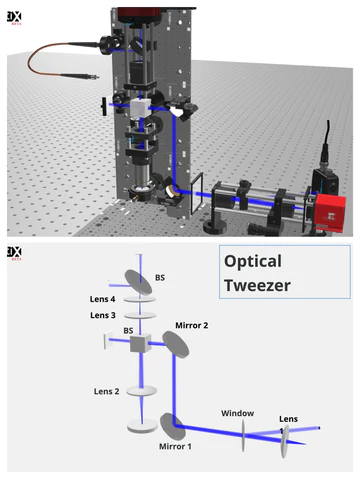The Evolving Landscape of Optical Design
In the ever-advancing world of technology, the realm of optical design has been undergoing a significant transformation. As our reliance on optical systems continues to grow, from microscopes and telescopes to fiber optic communications and augmented reality devices, the need for efficient and accurate design processes has become paramount. Traditional methods of optical design, while still valuable, are increasingly being complemented by cutting-edge virtual verification platforms, opening up new realms of possibility and redefining the future of this intricate field.
Challenges of Traditional Optical Design
Historically, optical design has been a meticulous process, relying heavily on theoretical calculations, physical prototyping, and iterative testing. While this approach has yielded remarkable achievements, it often comes with inherent limitations and inefficiencies. Physical prototypes can be costly and time-consuming to produce, and the process of fine-tuning designs through multiple iterations can be laborious and resource-intensive.
Moreover, traditional methods may struggle to fully capture the complexities of real-world conditions, such as environmental factors, material imperfections, or manufacturing tolerances. These limitations can lead to discrepancies between the designed and realized performance of optical systems, necessitating further adjustments and compromises.
The Rise of Virtual Verification Platforms
Enter virtual verification platforms, a game-changing technology that is revolutionizing the field of optical design. These advanced computational tools leverage the power of sophisticated simulation software, enabling designers to create and test virtual prototypes in a highly realistic and controlled virtual environment.
By harnessing the capabilities of modern computing systems and leveraging advanced algorithms, virtual verification platforms can accurately model the behavior of light as it interacts with optical components and systems. This allows designers to explore a vast array of design possibilities, analyze performance metrics, and identify potential issues or opportunities for optimization, all within a virtual realm.
The Benefits of Virtual Verification
The advantages of virtual verification platforms are multifaceted and compelling. One of the most significant benefits is the ability to rapidly iterate and refine designs without the need for physical prototyping. This not only drastically reduces costs and lead times but also enables designers to explore a broader range of design alternatives, fostering innovation and pushing the boundaries of what is possible.
Furthermore, virtual verification platforms offer unparalleled flexibility in simulating various real-world conditions and scenarios. Environmental factors such as temperature, humidity, and vibrations can be accurately modeled, allowing designers to anticipate and mitigate potential performance degradations before committing to physical production.
Additionally, these platforms enable seamless collaboration among design teams, regardless of geographical location. Virtual prototypes can be easily shared and reviewed, facilitating efficient communication and streamlining the design process across distributed teams.
Enhancing Optical Design Workflows
The integration of virtual verification platforms into optical design workflows has the potential to significantly enhance productivity and efficiency. By leveraging these powerful tools, designers can rapidly iterate and optimize designs, reducing the need for physical prototyping and testing cycles.
Moreover, virtual verification platforms enable designers to explore unconventional or complex designs that may be challenging or even impossible to prototype physically. This opens up new avenues for innovation and creativity, allowing designers to push the boundaries of what is achievable in optical systems.
The Convergence of Virtual and Physical
While virtual verification platforms offer numerous advantages, it is important to recognize that they complement rather than replace traditional physical prototyping and testing methods. Ultimately, the future of optical design lies in the seamless integration of virtual and physical approaches, leveraging the strengths of each to achieve optimal results.
Virtual prototypes can serve as powerful tools for initial design exploration, optimization, and validation, while physical prototypes remain essential for final validation, performance verification, and manufacturing preparation. By judiciously combining these approaches, designers can streamline the development process, reduce costs, and ensure the highest levels of accuracy and reliability in their optical systems.
Embracing the Future of Optical Design
As the world continues to push the boundaries of technological innovation, the demand for advanced optical systems will only continue to grow. From cutting-edge medical imaging devices to next-generation telecommunications and beyond, the future of optical design holds immense promise and opportunity.
By embracing virtual verification platforms and integrating them into their design workflows, optical engineers and designers can stay ahead of the curve, delivering innovative and high-performing solutions that meet the ever-evolving needs of our modern world. As we look towards the horizon, the convergence of virtual and physical approaches will undoubtedly shape the future of optical design, ushering in a new era of efficiency, accuracy, and groundbreaking discoveries.










